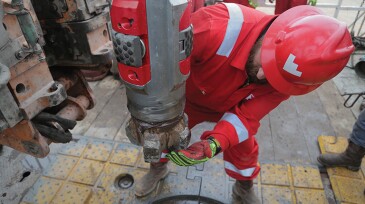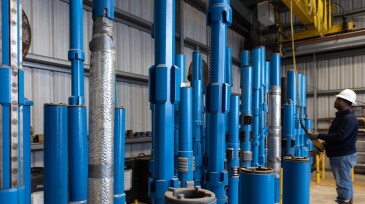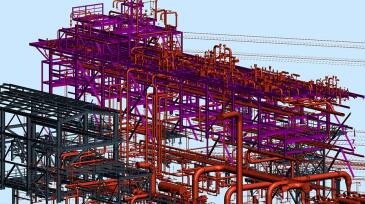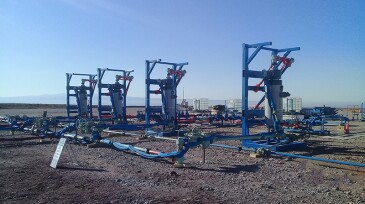case study
-
To evaluate performance of a range of blended inhibitors, a trial was run on a North Sea produced water system which was applying monoethanolamine (MEA) phosphonate-type scale inhibitor as well as novel cleaning programs to counter a high carbonate saturation ratio in the heater. The objective was to find an improved scale inhibitor formulation that would outperform M…
-
This case study presents results achieved in Romania, Mexico, and Kuwait with the use of a series of innovations featuring integrated bottomhole assemblies. A push-the-bit system combines high-performance drilling with precise directional control.
-
A consortium of 20 organizations, REX-CO2, including research institutions, operators, and regulatory authorities, studied mature wells in two areas of the UK Continental Shelf. Subsurface data were evaluated and verified the wells’ potential suitability for both reuse and CO2 injection and storage.
-
SponsoredCase studies prove the benefits of choosing a greener, more efficient, and more powerful displacement system
-
An automated detection application helped identify stringers early for an operator of a mature field in the North Sea while drilling multilateral wells through reservoir sections containing hard calcite stringers interspersed in sand formations with low unconfined compressive strength. The application guided drilling decisions that minimized invisible lost time and sh…
-
An emissions-reduction study conducted for a Middle East operator identified potential annual savings of $10 million–$15 million, a 20% decrease in total Scope 1 CO2eq emissions, and 10 MW of energy reduction and delivered more than 100 recommendations for both technical and internal framework improvements.
-
Zachry Industrial highlights the benefits of using advanced modeling to plan the construction to update the $10 billion Golden Pass LNG from an import terminal to an import/export terminal, connecting thousands of project participants during COVID-19 lockdowns.
-
Managed-pressure drilling has been associated as a technology used only on problematic wells and only as a last resort. However, when integrated at the beginning of operations as part of a comprehensive well plan, it becomes a performance-enhancing solution for any type of well classification, including development, directional, multilaterals, and horizontals.
-
Capitalizing on technology that originated with NASA delivers savings on directional drilling operations.
-
SponsoredCase study on how a Marcellus operator was able to recover 99%+ of frac sand in high flowrate wells using advanced cyclone technology.










